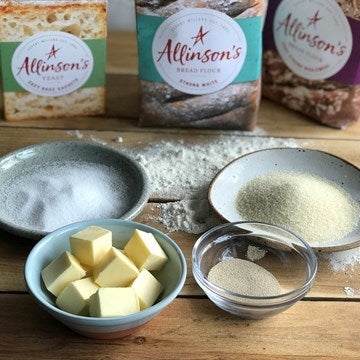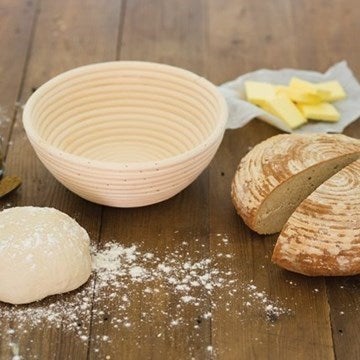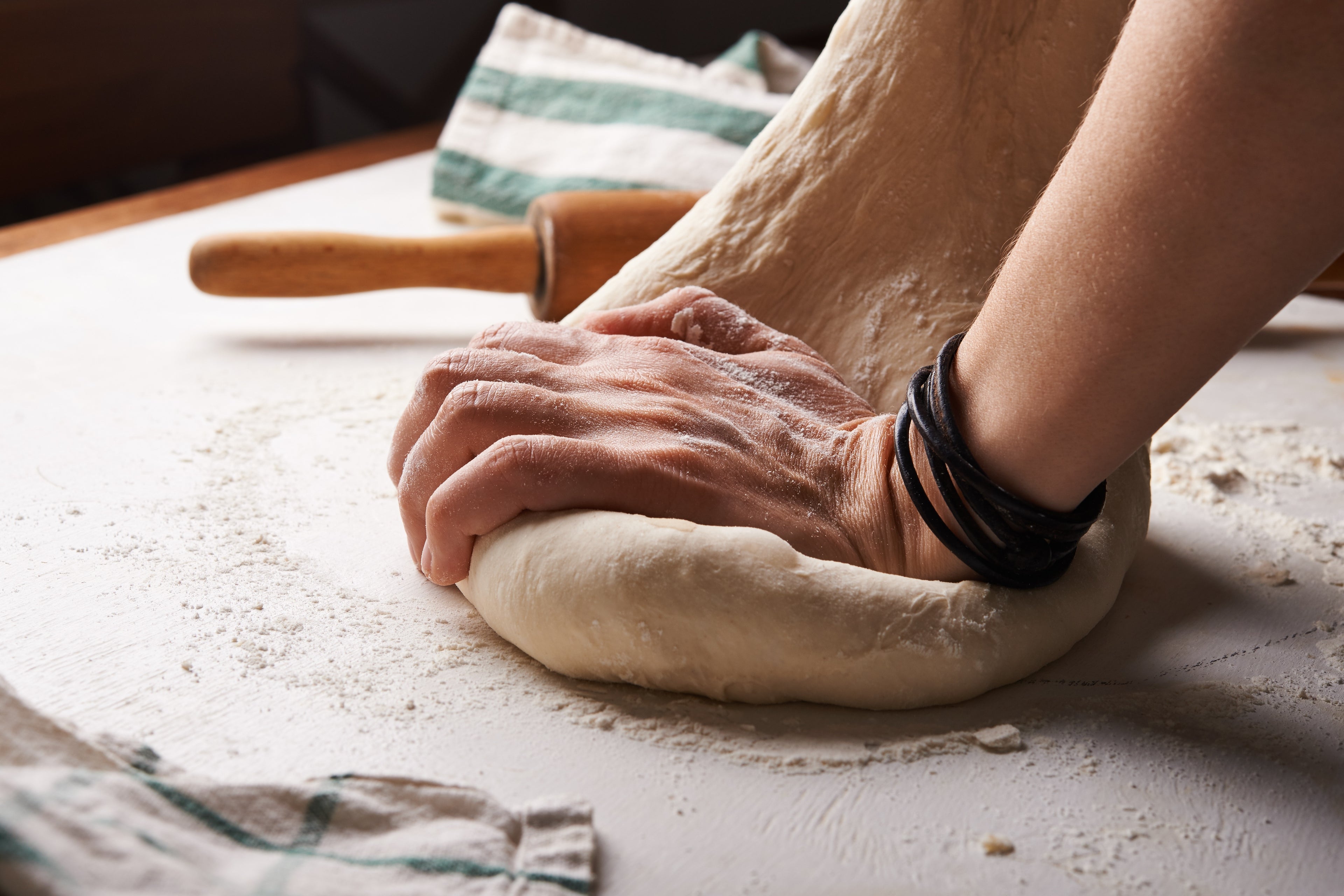5 Secrets to Brilliant Bread
Bread & Dough1. The Ingredients are Key

The first rule of bread baking is to follow the ingredient quantities to the letter, this will help achieve a successful loaf.
You may have also wondered at some point ‘what is the difference between plain flour and bread flour?’ Most recipes will call for Strong Bread Flour as this type of flour has more protein content than standard plain baking flour and it helps with the gluten development of your loaf. Very Strong Bread Flour has even higher protein content than the strong white bread flour. This guarantees a fuller rise and when blended with other flours such as rye and wholemeal will help give a round loaf.
It is important to ensure that your yeast is in date before using as this will affect the outcome of your loaf. Allinson's Easy Bake Yeast is a really convenient yeast to use when bread baking as it requires no activation and the 7g sachets are the perfect amount for a 2lb loaf. You can buy the Allinson's flour and yeast range in your local supermarket.
A general rule of thumb when bread baking is to keep your yeast, salt and sugar separate from each other when adding to your mixing bowl. The sugar and salt can both kill the yeast which will reduce the effectiveness of the yeast if they come into contact at the early stages of bread baking. A simple solution to this is to add the salt and sugar to the water and the yeast to the flour mix before combining all the ingredients together.
2. Water temperature
It is best to use luke warm water when bread baking. If the water is too hot it will activate the yeast too quickly and similarly water that is too cool can slow down the process. A good way to achieve an optimum temperature is to work on 2 parts cold water to 1 part boiling (i.e for 300ml of water – 200ml cold water and 100ml boiling water)
3. How to knead bread?
Kneading bread is a process that might take a little practice. By kneading the dough you are developing the gluten which in turn will give your dough stretch and elasticity. Follow our simple video for top tips on kneading. Don’t knead for longer than 10 minutes otherwise your dough may become tough.
If you find the process of kneading bread by hand too taxing you can also use a dough hook on a food mixer. Simply reduce the kneading time down to 5 minutes using a medium speed setting.
4. Proving conditions

Once your dough has been kneaded, return to a lightly oiled mixing bowl and cover with a clean tea towel or oiled cling film. Alternatively, for a fancier professional looking loaf, why not use a homemade round loaf proving basket. Using a proving basket means that the dough will maintain its shape before you bake it. As the dough rises, the basket leaves a subtle imprint giving your finished loaf added flair.
It is important to prove your dough in a nice warm condition until it has doubled in size. There is no set time for how long this will take so keep an eye on your dough. If it is a warm summer day for example it might prove a lot quicker. You don’t want your dough to overprove as it is filling with carbon dioxide (created by the ingredients) and if the dough overstretches it may tear and sink.
5. How to keep bread fresh?
One of the challenges with baking bread is keeping it fresh (if you don’t gobble it all up on the first day of baking) There are some fantastic bread bins and bags available to purchase which can help with this, or alternatively, read on for helpful tips on how to freeze your bread.
The easiest way to freeze your bread is to slice it before hand and wrap the slices individually so that when you come to defrosting you don’t need to defrost the whole loaf.
First, make sure that your loaf is fully cooled.
Then wrap your slices tightly in double layers of plastic cling film wrap.
Bread can be frozen up to six months in a freezer. When you are ready to use it bring the bread out and let it come to room temperature. Unwrap the cling film and then wrap in tin foil. Place in the oven on 180°C for 10 minutes to warm the loaf and bring back the lovely freshness of homemade bread.
